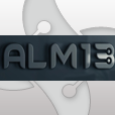Environment Variable
Hi,
Please help me understand what does this system environment variable do, LANG=C.
- V
Please help me understand what does this system environment variable do, LANG=C.
- V
0 Comments
[ + ] Show comments
Answers (11)
Please log in to answer
Posted by:
anonymous_9363
14 years ago
Posted by:
VMGupta
14 years ago
talking about a package? An application?
[font="trebuchet ms"]
[font="trebuchet ms"]
[font="trebuchet ms"]
[font="trebuchet ms"]
[font="trebuchet ms"]
[font="trebuchet ms"]
[font="trebuchet ms"]
[font="trebuchet ms"]
Posted by:
anonymous_9363
14 years ago
Clearly it's application-specific so your best bet is to contact the vendor. As for the actual error message, I *really* don't think it could be any clearer: you need to add the folder where those DLLs are installed to the user's PATH. Note I say the user's PATH: if you use the System PATH, you'll need to reboot the workstation before it takes effect.
Posted by:
jcarri06
14 years ago
Posted by:
anonymous_9363
14 years ago
It's the case for all NT-based OSs UNLESS the PATH (or other environment variable) is added via the Control Panel 'System' applet. When that is used, it generates a system-wide message that the environment has changed. Clearly, with the code and concept having been around since 1995-ish, the Windows Installer team evidently took the view that it was a bit "leading edge" and didn't bother implementing it.
Posted by:
VMGupta
14 years ago
Posted by:
anonymous_9363
14 years ago
The first step we did was to update the PATH var, but that didnt solve the issue.Yes, but was that the System or User PATH? As a User PATH, once the installation has finished, launching the application is a separate process and will thus pick up the addition. If, however, you added to the System PATH, it won't take effect until the system is restarted.
If you're going to talk to the vendor, you want to ask him why his application is so brain-dead that it even cares about the PATH, much less relies on it. This is 2009, for God's sake! PATH should have died with DOS 6.22...
Posted by:
joedown
14 years ago
What I wouldn't give to be a third party listening in when Ian calls vendors about problems with packages. I bet it's a hoot! [:D]
ORIGINAL: VBScab
If you're going to talk to the vendor, you want to ask him why his application is so brain-dead that it even cares about the PATH, much less relies on it. This is 2009, for God's sake! PATH should have died with DOS 6.22...
Posted by:
anonymous_9363
14 years ago
I no longer call vendors about packages, nor indeed their useless applications. I just advise the business unit concerned and ask them if they want to risk their data with software which, for example, continues to try to update itself when the automatic download has failed...Oh, and for good measure, if the failure is the first item, it's more than happy to try the remaining 41 items, even though none will work with older versions...Oh, and for extra good measure, right at the end of that process, it updates the registry to indicate a successful update.
This software cost my client a six-figure sum to buy and a four-figure yearly per-user license...
This software cost my client a six-figure sum to buy and a four-figure yearly per-user license...
Posted by:
jmcfadyen
14 years ago
Posted by:
ElWygo
14 years ago
The error message that you are dealing with is due to the System Environment Path missing the location to your Sybase Open Client. First make sure it is installed (lookup in Add/Remove Programs). It is possible that it is not in Add/Remove programs under the name Sybase Open Client but a part of a different installation. The normal install directory of Sybase openclient is C:\Sybase. Maybe a quicker way to find out where the DLL are is just to search for them and remember the path and put it in the system variable (of course reboot is necessary).
Hope you find it and good luck.
Regards,
ElWygo
Hope you find it and good luck.
Regards,
ElWygo
 Rating comments in this legacy AppDeploy message board thread won't reorder them,
Rating comments in this legacy AppDeploy message board thread won't reorder them,so that the conversation will remain readable.





